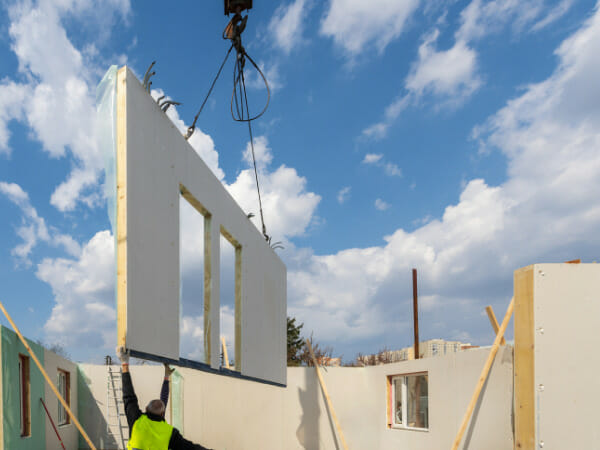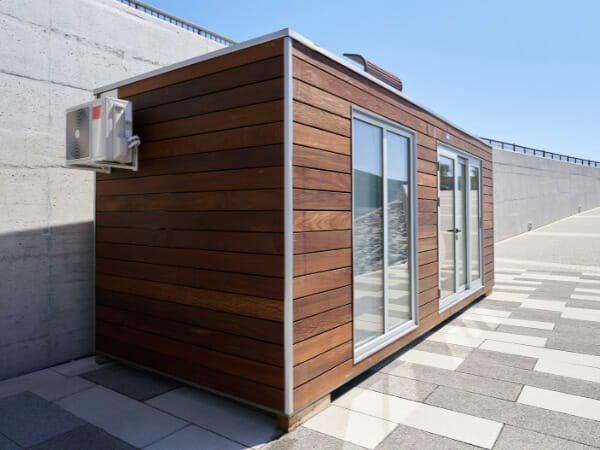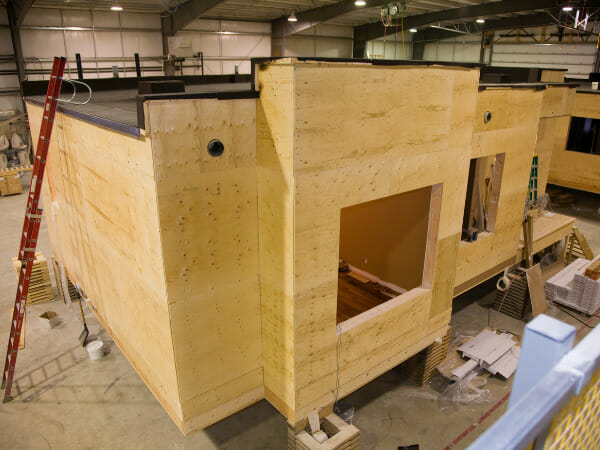Is Modular Housing Right for You?
Everyone looks forward to owning a home; however, the financial aspect is always a major dealbreaker. Where will you find the time and resources to start designing and building a home? Consider modular housing.
Getting the funds for architects, construction workers, engineers, site planners, and others can be a heavy-duty task.
This is why modular homes have become a great alternative to the usual way of designing and building homes. Modular homes don’t require all the hassles of getting numerous workers on-site and trying to find someone to manage them all. But we proceed, what are modular homes?
What Is a Modular Home?

This is a home that is pre-designed and built indoors, usually inside a factory setting. The different parts of the home that are built are then transported to the site, where they can be assembled into a home.
Modular homes can often be mistaken for other home types, and it’s important to know the difference.
Modular Homes and Manufactured Homes
While they are similar, manufactured homes are not the same. Manufactured homes are usually movable because they are not placed on a permanent foundation. Rather, they can be picked up and moved from place to place.
The newer term for a manufactured home is a mobile home. Unlike mobile homes, after construction, modular homes are mounted on permanent foundations that cannot be moved once they are set
Modular Homes and Prefab Homes
Prefab homes are essentially modular homes. They refer to the same thing, as prefab is simply another term that describes a building with sections that have been built off-site.
The Difference Between Modular Homes and Traditional Stick-Built Homes
While the traditional style home is built on-site, modular homes are manufactured off-site and assembled on-site. Traditional stick-built houses can often take months to be completed, while their modern counterparts can be completed within weeks instead. Due to poor weather, construction on site-built homes can often halt for days or weekends. None of these delays occur with modular construction. Modular homes are constructed indoors and away from the elements.
More Information on Modular Homes
This type of home stands out because of the ease and efficiency with which you can get a new home to suit your taste. They are very customizable and easy to design as they vary in style and size.
This home is also appraised as a traditional stick-built home. Essentially, they don’t depreciate in resale value. They can appreciate and be sold for profit. Taxes on normal site-built homes are the same as taxes on modular homes.
The insurance premium on a modular home is the same as that on a stick-built home. With manufactured homes or mobile homes, you will need dedicated homeowners insurance, but not for prefabricated houses and modern modular homes.
Modular homes are moved to the home site after they have been designed and built. The companies that build modular homes often have in-house engineering teams that use computer-aided design (CAD) to create homes. They also have modular buildings suppliers.
Additional details
Modular homes aren’t the only building type available in the modular world. You can also build modular office spaces, as well as other commercial buildings.
Just like site-built homes, modern modular homes can have basements and crawl spaces too. They are much faster to build, and they are also considered environmentally better than site-built homes. A mobile home doesn’t have such options.
They can be uniquely built to suit your needs, especially if you have a disability and you would prefer a home that makes accessible living easier. Because these homes can withstand strong winds (up to 173 mph), they’re safe to live in.
Contrary to popular belief, these homes don’t all look alike. In reality, modular homes have very few limitations when it comes to design, which can essentially get you your very own bespoke house. You can ask for any style or design of the home you want and add any architectural style you like (including different window styles). You can create your ideal home in weeks, which is more than can be said for a stick-built home.
How Are Modular Homes Assembled?
Most people that are interested in these homes or learning about them for the first time always ask this question. Unlike stick-built homes, modular homes are customized, designed, and built off-site before being assembled on site. The building process will often vary depending on how complex your ideal home is.
However, it is akin to building with lego blocks. Each section of the home is designed and built in the factory before being brought out to the site, and it is built from the ground up. Sections that will sit on the ground are set on foundations and can no longer be moved. A crane is often used to carry each section and place it on top (or beside) the other.
How Expensive Are Modular Homes vs. Stick-Built Homes?
You can save some good cash by building a prefab home rather than an on-site home. A prefabricated home or modular home has sections constructed indoors in a factory, which means they can be designed and built quickly. There won’t be any weather delays to stall construction.
Also, inspections are done at the factory, with each section inspected and quality assurance done. This happens before the comparable units leave the factory for the permanent site. On average, a home like this costs approximately $90 per square foot and $120 per square foot to build.
Stick-built homes usually start at around $150 per square foot. It is important to note that utility hookups can add some money on top of the base price.
Modular Homes Pros and Cons
There are several advantages of owning a modular home rather than a site-built home. However, there are also drawbacks that should be noted. Modular buildings are cost-effective, especially if you are building your own home from scratch.
However, you could be in the market looking to buy a prebuilt modular home. So here are the pros and cons.
Pros of a Modular House
Listed below are some reasons why owning a modular home can be a good investment.
- Cheaper to build, with costs as low as 15% compared to site-built homes.
- Faster to build and can be done in weeks.
- No home inspections are required as inspections can be completed when each section is built.
- Easily customizable and unique to your tastes.
- Often eco-friendly or built with eco-friendly materials and the latest modular building systems and modular components.
- Often more energy-efficient and can improve energy savings in the long term.
- No weather delays in construction, as each section is constructed indoors
- Modular homes are built to withstand heavy weather
- Because they are built in an assembly line process and not left at the mercy of a local contractor, it is easier to ensure quality control.
- Prefab homes are a good investment, and will do well in the real estate market.
Cons of Modular Homes
Just like every other house, these houses come with certain disadvantages. Listed below are some cons of modular homes.
- Modular homes require site preparation, so the land for the home must be bought and owned, unlike mobile homes.
- It cannot be built on subdivisions.
- Building a foundation for the home is a requirement
- Setting up electricals, plumbings, and other utility services will need to be paid for
- Getting your dream home might be impossible because it may not have all the features
- Payment may be required in full, as financing can be hard to get
- Transporting the home sections to assemble will cost money
Are Modular Homes Quality Real Estate Investments?
Like when dealing with a traditional home, location will seriously impact your modular home resale value. Whether you’re planning to sell an existing home on the resale market or looking to purchase a used one, where it is located will certainly affect the price.
Other areas matter as well, including the quality of the home and how well-maintained it is. If repairs have been consistent, maintenance has been good, and there is an appealing landscape, the property’s price will increase. You can get more info from your real estate agent.
Keep in mind, however, that many people are not yet accustomed to transposable homes, which could make it hard to sell your property. Be sure to reach out to different real estate agents before listing your property.
Home buyers with knowledge of modular homes will be more inclined to purchase your property, especially if it is in a sprawling urban development.
How Long Will Your Home Last?
Like with homes built on-site, the durability of a modular home depends on how well the modular home is maintained and how often repairs are done. Because modular homes are built with the same materials as standard homes, they will last just as long.
It is important to review and vet any company you would like to use for your modular home. Better modular home builders with better reviews are more likely to build a high-quality transposable home that is long-lasting and slower to deteriorate.
What Are the Risks of Buying a Transposable Home?
Modular homes usually come with high-quality materials, and they have to adhere to building standards and codes in your state. However, the risks tend to be found in the smaller details, and these are also some cons of modular buildings.
- You may not be able to build a prefab house on any land, so you need to ensure the land you want to buy is suitable and appropriately zoned.
- Installation of utilities and other fittings may not be in the original cost of your modular home, and you have to be aware of this.
- It may not be easy to get financing for a modular home. You need to know your options before buying a modular home, or you might regret it.
- You will need to verify with the appropriate body in your locality to ensure your modular house will meet local building codes, as some jurisdictions ban modular homes.
- After the construction company has assembled your home, you need to ensure that the house builder has properly fastened all the bolts and sections.
- Reselling your modular home may not be easy, as these homes are not yet popular in public perception. However, some home buyers do like transposable homes.
What financing options are available for a modular home?
It may not be easy to get a mortgage on a modular home because, before it’s assembly, it technically doesn’t exist. However, you could get a personal property loan, which is financing that focuses on housing.
These loans focus on the house itself, which means you need other financings to purchase the land if you cannot buy it outright.
These personal property loans can be great for someone buying a mobile home, as they do not need to own the land that the home sits on. However, for prefab homes, you will need to own the land, which will become the permanent site for the home.
It is possible to get other financing options like real property loans or even mortgages for your transposable home. Such loans will include the cost of the land, but it may be a difficult process. You will need to talk to your local lender and, with your credit score, see what rates and options are available to you.
Take A Construction Loan
A construction loan is also another route you can use to finance prefab homes. This is often a short-term, high-interest loan that is one-year long. Construction loans usually have higher rates compared to traditional mortgage loan rates, and they can be a rather costly option. These financing issues are cons of transposable homes.
In Conclusion
Modular homes tend to have notable advantages. They are unique in design, easy to build and finish in mere weeks. However, the disadvantages of modular homes are clear.
The drastic lack of options for financing your modular home could be easily bypassed by just building a traditional onsite home. Onsite houses are about 15% more expensive, but the ease of financing is hard to ignore.
Related Articles
As for durability, modular houses have high-quality materials, making them long-lasting and durable. They’re just as durable as a stick-built home, and they can easily withstand heavy weather and strong winds.
If you already have land or have the funds or means to purchase land, you should look into the idea of getting a unique and permanent transposable home. However, make sure that local building codes and land restrictions allow you to assemble a prefab home on the building site.
There are many transposable home manufacturers today. If your land is good to go, then make sure to properly review any modular-building company you want to approach. Look for manufacturers that have successfully assembled high-quality homes in the past, and look for reviews from other people.
When you’ve picked the right company, and you can finance your home, delve into the ideas with the company to create a unique home for yourself and your family. You could also go for any default floor plan on their catalog that you find yourself drawn to.
Lastly, remember to request any additional fees that need payment to provide utility services. At this point, you’re good to go with owning a prefab home. It’s a good investment, just like a normal home, and with the ever-evolving public perception, modular buildings represent future real estate. Eventually, even old-school buyers will start taking prefab housing seriously.







